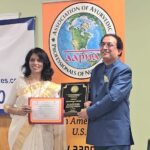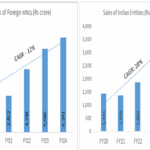Healthy Soch
New influenza strains emerge each year in India
New Delhi, March 13, 2019: The World Health Organization (WHO) recently launched a strategy to protect people worldwide over the next decade against the threat of influenza, warning that new pandemics are ‘inevitable’. WHO’s new strategy, for 2019 through 2030, aims to prevent seasonal influenza, control the virus’s spread from animals to humans and prepare for the next pandemic, WHO said.
Influenza epidemics, largely seasonal, affect around one billion people and kill hundreds of thousands annually, according to WHO, which describes it as one of the world’s greatest public health challenges. The new strategy called for every country to strengthen routine health programmes and to develop tailor-made influenza programmes that strengthen disease surveillance, response, prevention, control, and preparedness.
Speaking about this, Padma Shri Awardee, Dr KK Aggarwal, President, HCFI, said, “Influenza A is an archetypal shape shifter and causes most human outbreaks. The flu germ exists in dozens of sub-types of which two, H1N1 and H3N2, currently circulate in humans. Each of these further have many different strains, with new ones emerging all the time — each needing its own vaccine. The virus that causes flu has evolved manifold to avoid this detection by antibodies. Called, antigenic drift, minute genetic changes happen as the virus replicates, which make it different every season. Another change is called the antigenic shift in which genetic material is exchanged between Influenza A subtypes to create a brand-new strain to which few people, if any, have immunity.”
The WHO recommends annual flu vaccines as the most effective way to prevent the spread of the disease, especially for healthcare workers and people at higher risk of influenza complications. It also called for the development of more effective and more accessible vaccines and antiviral treatments.
Adding further, Dr Aggarwal, who is also the Group Editor-in-Chief of IJCP, said, “As viruses adapt and change, so do those contained within the vaccines – what is included in them is based on international surveillance and scientists’ calculations about which virus types and strains will circulate in a given year. Flu is primarily treated with rest and fluid intake to allow the body to fight the infection on its own. Paracetamol may help cure the symptoms but NSAIDs should be avoided. An annual vaccine can help prevent the flu and limit its complications.”
Some tips from HCFI
- Avoid close contact with people who are sick. When you are sick, keep your distance from others to protect them from getting sick too.
- If possible, stay home from work, school, and errands when you are sick. This will help prevent spreading your illness to others.
- Cover your mouth and nose with a tissue when coughing or sneezing. It may prevent those around you from getting sick.
- Washing your hands often will help protect you from germs. If soap and water are not available, use an alcohol-based hand rub.
- Germs are often spread when a person touches something that is contaminated with germs and then touches his or her eyes, nose, or mouth.
- Clean and disinfect frequently touched surfaces at home, work or school, especially when someone is ill. Get plenty of sleep, be physically active, manage your stress, drink plenty of fluids, and eat nutritious food.
Healthysoch







